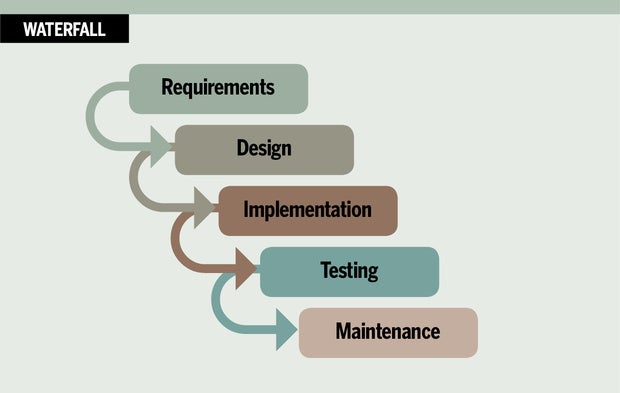
(This paper will only focus on the Waterfall model) What is the Waterfall methodology?Īlthough Herbert D. This prototype is developed based on the requirements that are already known. The customer can provide early feedback on the design, delivery, and other requirements, as they have early visibility.Ī throwaway prototype is built to understand the requirements rather than freezing the requirements for the design and coding that are required to begin.
Waterfall project management example software#
The output is considered to be the software developed which may or may not be to the customer requirements.įunctional modules are developed in parallel as the prototypes are integrated to make the complete product for faster product delivery. The development is initiated with the required money and the effort is considered to be the input. No specific process is followed in this model. Rather than allowing the processes to move down in a linear fashion like the Waterfall model, the V model process steps are bent upwards after the coding phase (like the “V” shape). This model allows incremental releases of the product or incremental refinement through each iteration around the spiral. There are seven types of SDLC’s and the Waterfall model is one of them, the other six are:īreaking down the software development of a large application into smaller chunks, the iterative model makes use of repeated cycles.Ĭombination of iterative model and sequential linear development (Waterfall with a high emphasis on risk analysis).

The main purpose for implementing SDLC is to provide a cost efficient product, which is also of high quality. This cycle creates a structure for the developer to design, create, and produce/deliver high-quality software (that depend on the client requirements or end user).įurthermore SDLC also provides a methodology for improving the quality of the product. Software Development Life Cycle is a systematic approach to develop software. 10 Summary and Facts Software Development Life Cycle (SDLC)


 0 kommentar(er)
0 kommentar(er)
